A seismic shift in the conference landscape
Forget football, the demise of the Pac-12 and other changes will have a huge impact on women’s sports in the Big Ten and Big 12
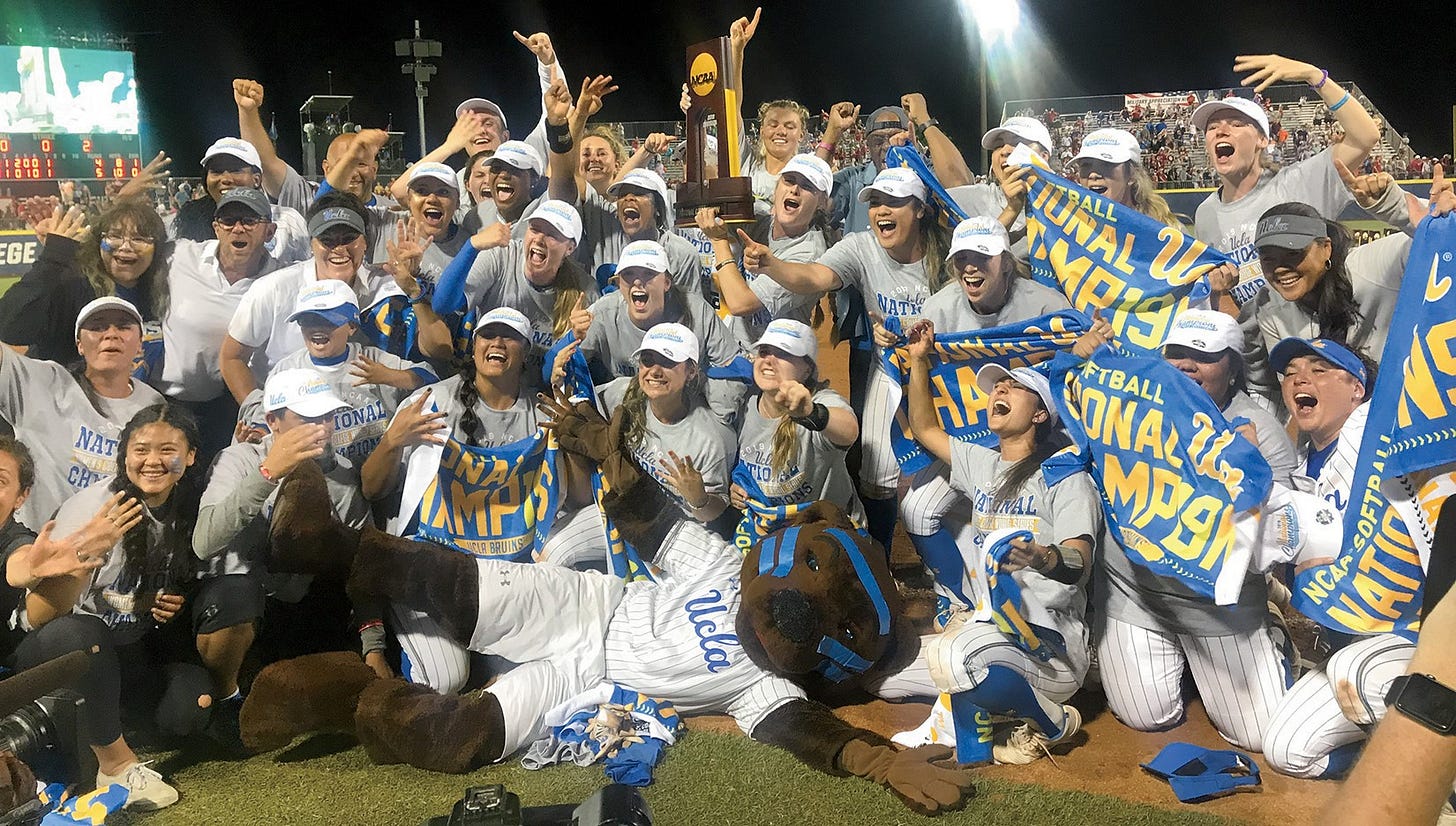
When the Big Ten softball tournament begins on Wednesday at Pearl Field in Iowa City, it will be one of the last looks at the conference as we know it now.
More than 600 miles southwest in Oklahoma City, the Big 12 tournament will provide a melancholy swan song for key members of an elite softball conference.
While the conference overhauls that have rocked college sports in recent years have been all about football, the trickle-down effects are blowing up every other sport and shifting power throughout the country.
“These are seismic moves,” former Fox Sports executive Bob Thompson told The Associated Press in December.
Come fall, the Big Ten will include Oregon, Southern Cal, UCLA and Washington from the Pac-12, which is disintegrating. The Big 12 will lose Oklahoma and Texas to the Southeastern Conference while gaining Arizona, Arizona State and Utah and in the case of Colorado, regaining. Basic math and geography be damned.
And if you think that’s going to be a big deal for football, the moves for softball, volleyball and women’s basketball, just to name a few sports, aren’t so much seismic but more like a giant meteor crashing into Earth.
In many ways, this is nothing new. When Penn State joined the Big Ten in 1990, it was so much about football few realized the conference was gaining volleyball and women’s basketball powers. Ditto when Texas became part of the Big 12 in 1994, bringing the league elite teams in volleyball, track and women’s basketball.
Nebraska’s volleyball team helped turn the Big Ten into a top conference for the sport when it joined in 2012. And when the Big Ten added Maryland and Rutgers in 2014 to get that East Coast revenue for the Big Ten Network, football gained little in the way of power teams but women’s basketball gained what were then two Final Four caliber programs.
Yet this move feels a little different. Part of that is because it involves the death of the Pac-12, one of the nation’s finest athletic conferences. It’s the league that helped people fall in love with college sports – John Wooden’s UCLA Bruins, Tara VanDerveer’s Stanford Cardinal (and just about every other sport at Stanford), Oregon track and field, USC football, those Boys in the Boat from Washington, so many Olympians in swimming and track and, of course, the Stanford band. (Disclosure: My sister is a director for the Pac-12 Network and the change is turning her work life, and that of so many other people, upside down.)
“It impacts a lot of people; it’s hard to even understand all the people it affects,” said Krista Blunk, who does TV commentary for the Pac-12 Network for women’s basketball, volleyball, soccer and softball. “It’s hard because you just think it didn’t have to turn out the way it turned out. It’s unfortunate for so many reasons.”
For Big Ten softball, the conference overhauls aren’t so much about what is lost but what is coming. The Pac-12 has been a traditional power in the sport, but some of that dominance has been ceded to the Big 12 and the SEC in recent years. Rankings for future Big Ten members are No. 6 UCLA, No. 11 Washington and No. 22 Oregon with the current Big Ten member Northwestern at No. 23. (The fourth new team to the Big Ten next season, Southern Cal, does not have a softball team.)
Pac-12 teams have won 25 of the 41 NCAA softball titles. UCLA has won 13 of them. Washington and future Big 12 members Arizona (ranked No. 19) and Arizona State have won them, too. Michigan is the Big Ten’s sole champion, in 2005.
“It’s some of the best of the best,” Blunk said of Pac-12 softball. “It’s disappointing to see some of this talent leave, but what a big plus for some of the other conferences to have these teams coming in.”
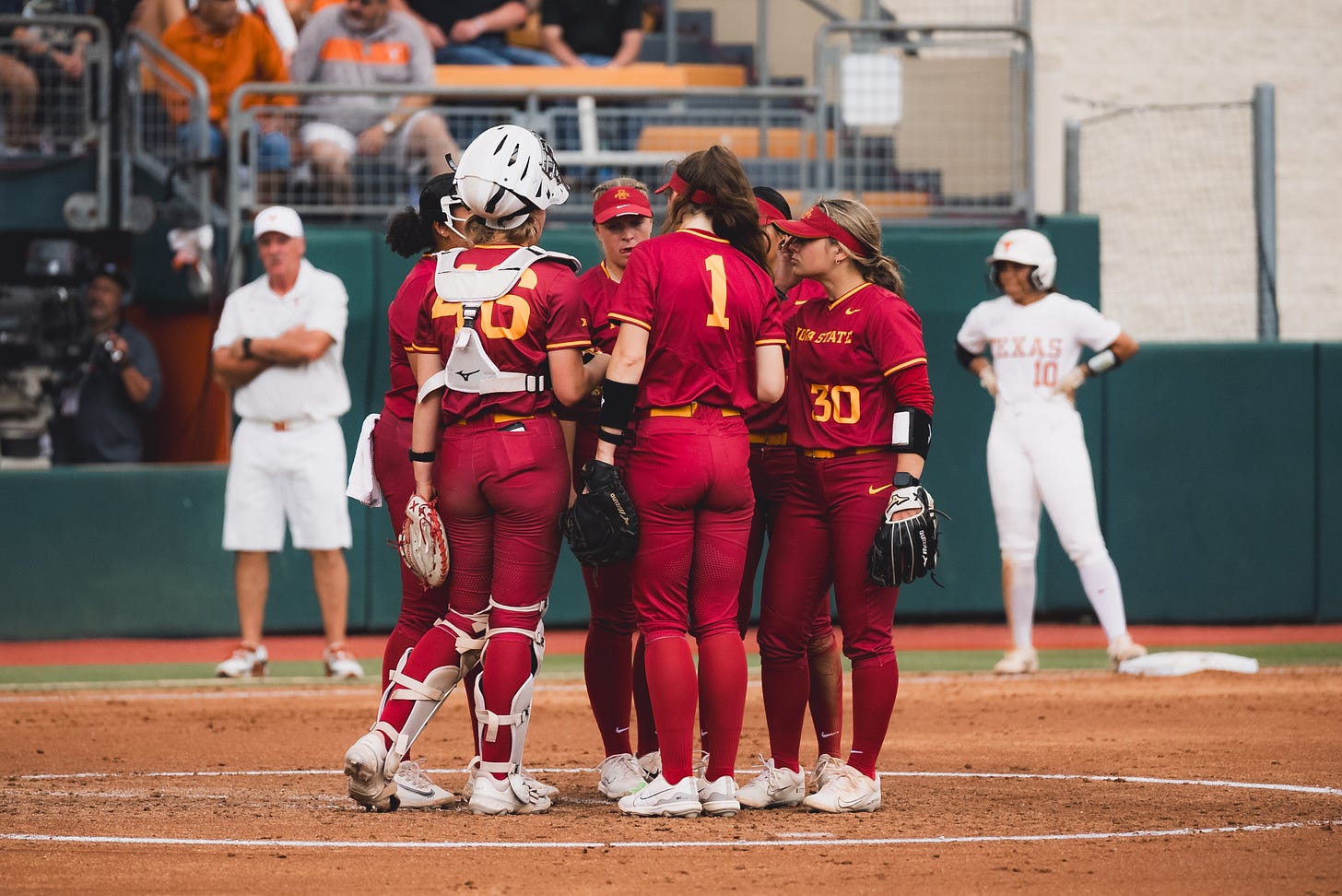
The arrival of Arizona and Arizona State brings two traditionally strong softball programs to the Big 12, but it’s tough to make up for what the conference is losing. Oklahoma is riding a three-peat of NCAA championships and has won six titles since 2013. Texas is the current No. 1 team and was NCAA runner-up to the Sooners in 2022.
Blunk said that while she and her broadcast team partners have tried to keep things positive throughout the sports season, coaches and staff always bring up the topic of the Pac-12’s demise with them.
“One of the coaches said to me, ‘I look at all these titles, all these banners up on the wall and they’re not going to care about this at the new conference. It will mean nothing to them,’” Blunk said. “It was a sad way to look at it.”
For women’s sports, the impact of the conference shifts hits a multitude of sports hard. Here’s just a sampling of what’s in store.
Volleyball
It’s going to be even harder for Iowa to get out of the Big Ten basement with more strong teams coming into the already elite conference. Now traditional powers Nebraska, Wisconsin and Minnesota will also have to deal with UCLA (a four-time NCAA champion), USC (a three-time champ), Washington (the 2005 champ with 27 NCAA appearances) and Oregon (a tournament regular with 20 appearances).
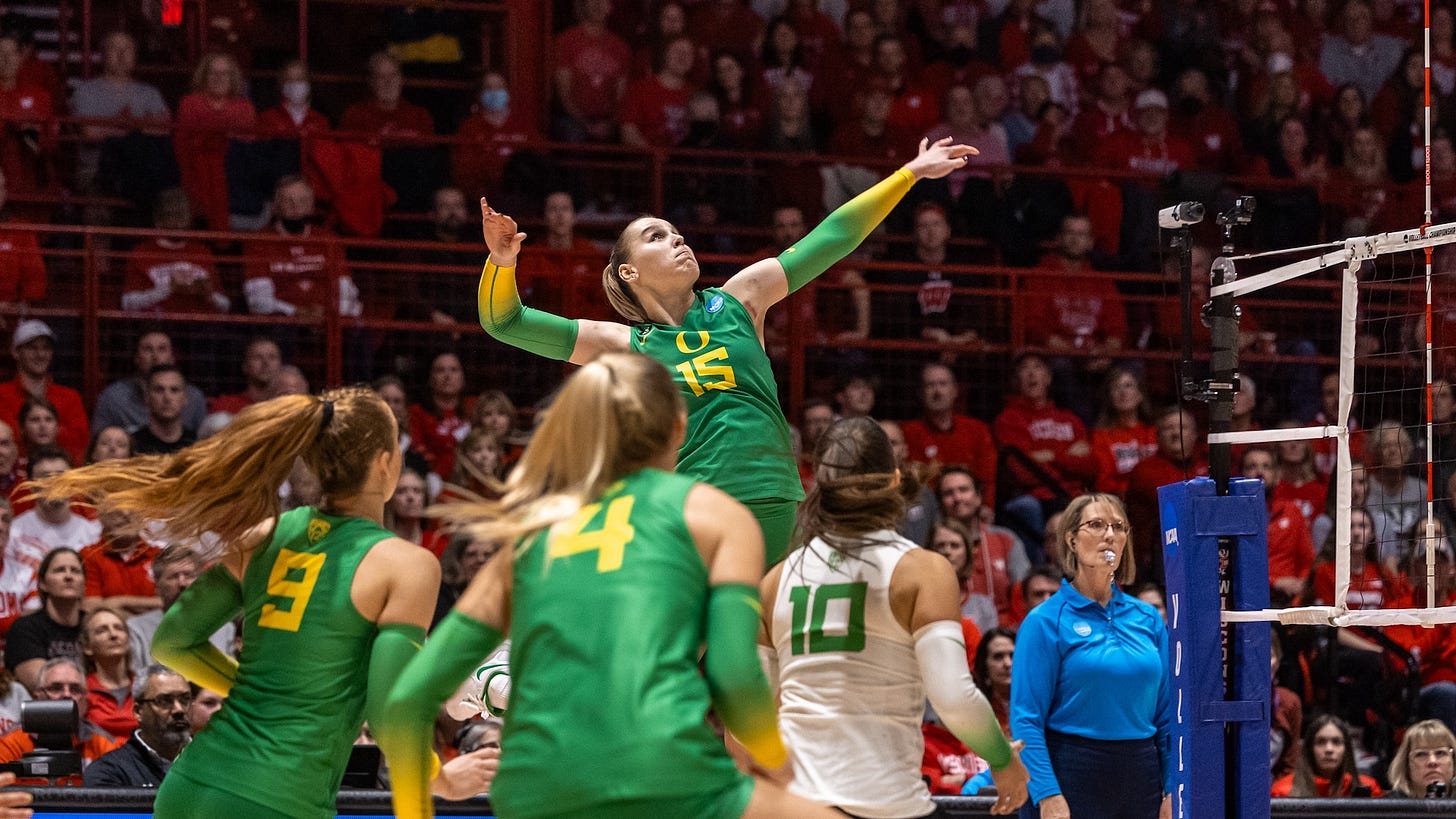
The style of play is a little different, too, Blunk said.
“You’re going to get length and quickness instead of the physical play at the net that you’ll see in the Big Ten/Big 12,” she said. “They run very fast offenses. I’ve had coaches tell me that they’ve told their assistants to slow it down, they were trying to go too fast. It’s really great when it works.”
With the departure of Texas, the Big 12 is losing a five-time NCAA champion, including the past two titles. The Longhorns have also won 16 Big 12 championships. New member Arizona State made the NCAA tournament last year, as did recent new Big 12 members Houston and Brigham Young along with Baylor, Kansas and Iowa State. That doesn’t quite make up for losing the conference’s best, though.
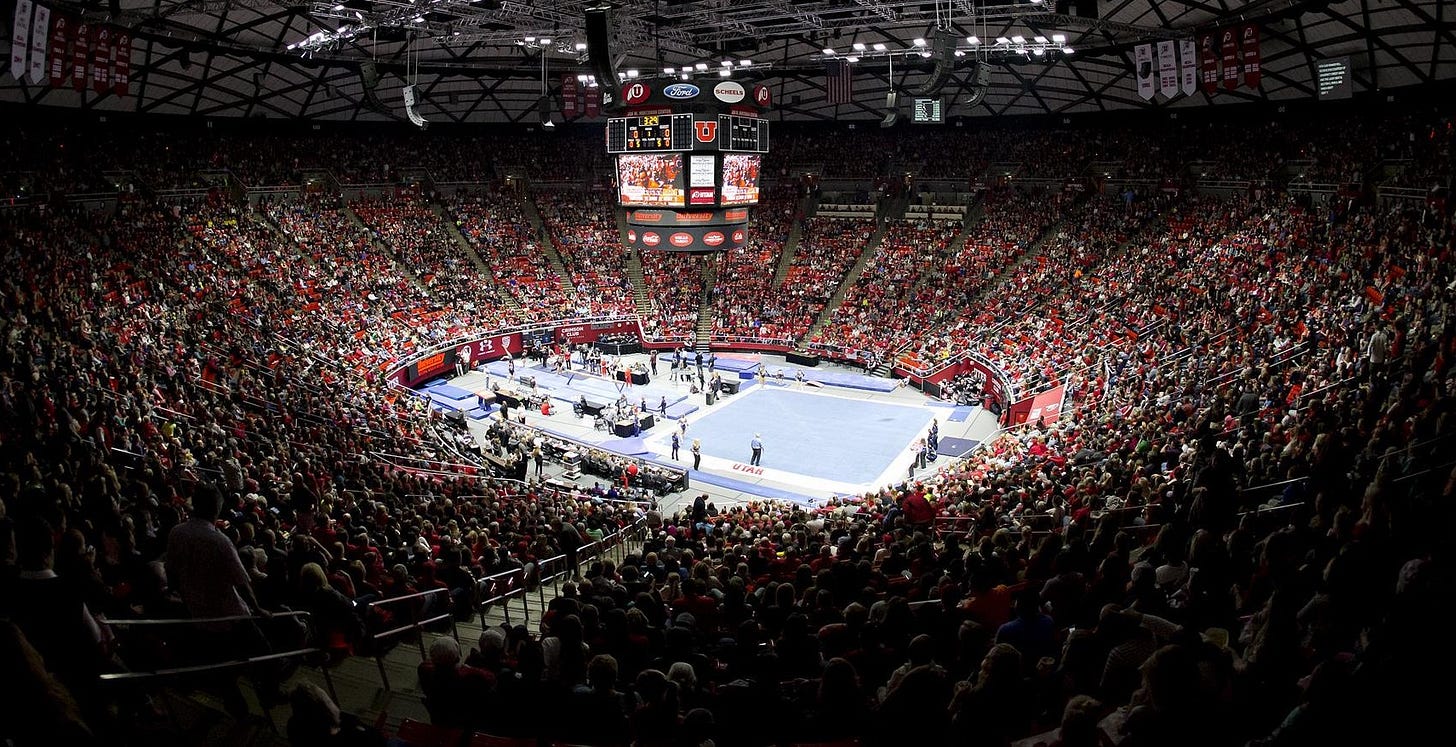
Gymnastics
Like softball, the loss of Oklahoma stings for the Big 12. The Sooners have won six NCAA titles, all since 2014. However, the league gains Utah. The Red Rocks have won nine NCAA titles and dominated the Pac-12 after joining in 2011. They have been one of the sport’s top draws, averaging 14,500 fans since 2010.
UCLA has won seven NCAA titles, its last in 2018. Michigan, the Big Ten’s current power, won the NCAA title in 2021.
Women’s basketball
After Iowa’s Caitlin Clark, one of the most celebrated players in the country this past season was USC’s JuJu Watkins. The national freshman of the year will be in the Big Ten now, which will be a treat for fans of the conference.
Watkins will also have some company among the stars coming to the Big Ten, thanks to the merger and the transfer portal. Watkins will be joined at USC by Kiki Iriafen from Stanford, who Iowa State fans likely remember as the player who scored 41 points against the Cyclones in the fantastic NCAA second-round overtime game in March.
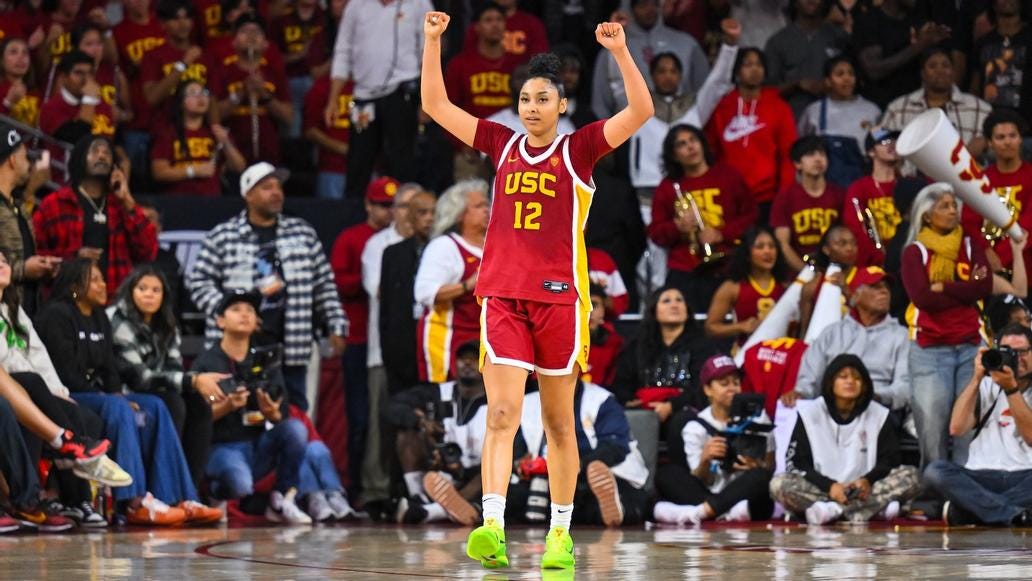
UCLA also benefited from the detritus of the Pac-12, picking up one of the conference’s top players, Charlisse Leger-Walker of Washington State and Timea Gardner from Oregon State’s Elite Eight team.
In the Big 12, the loss of Oklahoma and Texas stings, but three of the new teams made the NCAA tournament last season – Colorado, Arizona and Utah. Given Iowa State’s returning talent and its success in the transfer portal, the loss of the power teams could time well for the Cyclones.
It’s important to remember that no teams went away, they just went elsewhere. The concentration of power teams will create the potential for great conference play, but also for heartbreak come tournament time.
“They’re going to beat up on each other – and there are pros and cons to that,” Blunk said. “You better do some damage in the nonconference because if you start beating each other up in the conference, you’re jeopardizing your records.”
That’s the same for all the sports - even football, the sport that has driven all the upheaval.
“Be careful what you wish for,” Blunk said.
Conference lineups for 2024-25
Big Ten (new teams in bold): Illinois, Iowa, Indiana, Maryland, Michigan, Michigan State, Minnesota, Nebraska, Northwestern, Oregon, Penn State, Purdue, Rutgers, Southern Cal, UCLA, Washington, Wisconsin.
Big 12: Arizona, Arizona State, Baylor, Brigham Young, Central Florida, Cincinnati, Colorado, Houston, Iowa State, Kansas, Kansas State, Oklahoma State, Texas Christian, Texas Tech, Utah, West Virginia.
The Big Ten softball tournament is Wednesday, May 8-11 at Pearl Field in Iowa City. Games will be televised on the Big Ten Network.
The Big 12 softball tournament is also May 8-11 in Oklahoma City. Games will be shown on ESPN+, with Saturday’s final on ESPN2.
Jane Burns is a former sports and features writer for the Des Moines Register, as well as other publications and websites. She’s a past winner of the Women’s Basketball Coaches Association’s Mel Greenberg Award for her coverage of women’s basketball. Over the course of her career she’s covered pretty much everything, which is why her as-yet-to-be-written memoir will be called “Cheese and Basketball: Stories From a Reporter Who Has Covered Everything.”
Iowa Writers’ Collaborative
I’m happy to join fellow Iowa writers and journalists as part of the Iowa Writers’ Collaborative. To receive a roundup of the week’s columns, subscribe to the Collaborative’s Sunday email.




I've been pondering this realignment as I watch the clock run out on the Pac 12. How they went from the conference that bit off chunks of the Big 12 to self-immolation has just been crazy. It's more than a discussion about time zones and TV viewers. It's how the decision makers at the top destroyed their conference (as it was previously constituted) through terrible choices. I suspect that the increased travel will fall most heavily on women's sports. Not just in terms of time and comfort, but also in terms of budget impact to the sports involved. It will require some adjustments, and if I recall correctly (B1G) the newest members are not granted an immediate full revenue share.
As far as Oklahoma and Texas, I think that their heavy-handed behavior since formation of the Big 12 will not be missed. I also think Texas an Oklahoma will find the immediate road bumpy as they navigate moving from the bully in the building to junior partner status.
I hope that the PAC 12 can find its way to a reconstituted roster of members. It is still a valuable brand, and with a more rational view of their current media value (and a needed leadership upgrade) they might well rise from these ashes...but it will take time. It's too late for Pac 12 leadership to take the essential step to first do no harm. Now they need to focus on do no MORE harm. I hope they make it.